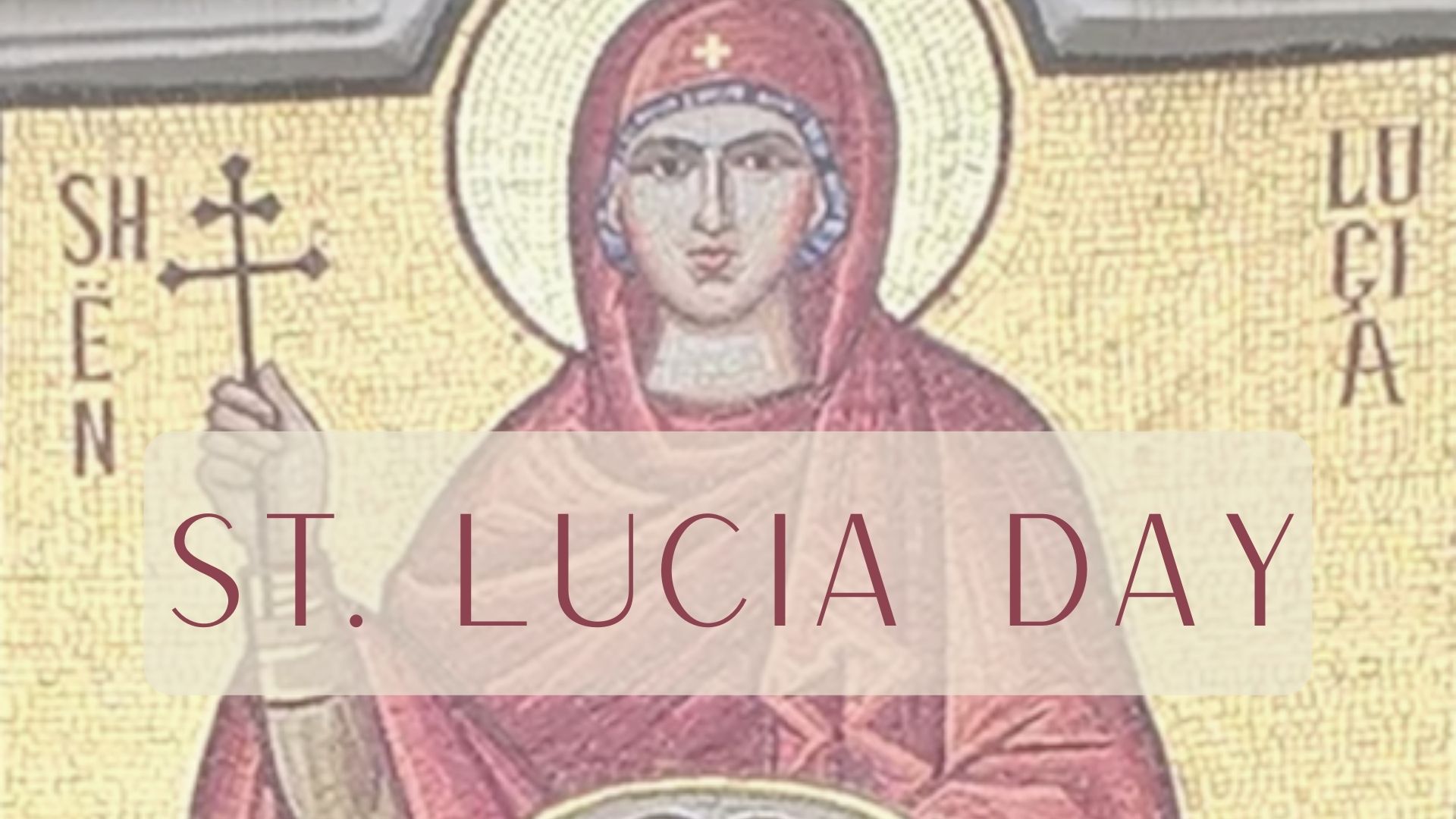St. Lucia’s (St. Lucy) Day is a festival of lights, celebrated widely in Scandinavia and Italy. It signifies the beginning of the Christmas season on December 13th. St Lucia, whose name means light, was a young girl martyred in 304 A.D. under the Christian persecution orders of the Roman Emperor Diocletian.
Travel writer Rick Steves writes, “the Scandinavian version of the legend is that a young woman born of rich and noble parents – dressed in a white gown with a red sash and wearing a crown of lingonberry twigs and blazing candles – traveled from one farm to the next in the early morning on December 13th. She carried a torch to light her way, bringing baked goods to each house, returning home by sunrise.”
Religious versions say she was a faithful young woman who dedicated her life to Christianity and rejected a pagan suitor who turned her over to the Roman authorities when she started giving away her own dowry to the poor and needy, and smuggling food to Christians. She was subsequently tortured, lost her eyes during her martyrdom, and had her eyes miraculously restored before her burial.
She is the patron saint of the blind, authors, some craftsmen, laborers, and martyrs. She is also the patron saint of Syracuse, Italy, where she lived and the Caribbean Island of St. Lucia. She is venerated as a saint in the Roman Catholic, Orthodox, Anglican, and Lutheran churches.
Families observe St. Lucia’s Day in their homes by having one of their daughters (traditionally the eldest) dress in white, don a crown of lights and wake the family with coffee and St. Lucia buns.

